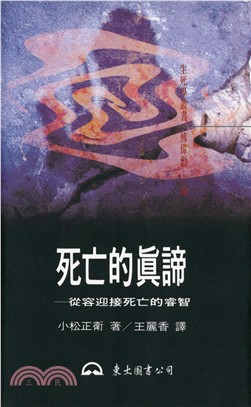ORGANIC COATINGS: SCIENCE AND TECHNOLOGY, THIRD EDITION
商品資訊
定價
:NT$ 7348 元優惠價
:90 折 6613 元
若需訂購本書,請電洽客服 02-25006600[分機130、131]。
相關商品
商品簡介
作者簡介
目次
商品簡介
Third Edition brings acclaimed textthoroughly up to date with the latestorganic coatings technology
Organic Coatings, Third Edition is an unparalleled reference and text for organic coatings technology and its myriad applications. It begins with discussions of key principles of coatings, then thoroughly explores raw materials, physical concepts, formulations, and applications. Scientists, engineers, and paint formulators all gain a deeper understanding of the principles underlying the technology and learn how to use these principles in the development, production, and application of organic coatings. The four authors, all leading industry experts, offer a unique approach to the topic that correlates the empirical technology of coatings with the underlying science.
This Third Edition has been completely revised and updated to reflect numerous changes in the field, including changes driven by increasing pressure to lower VOC emissions, reduce energy requirements, and eliminate potential health hazards from organic coatings components. In addition, the authors have developed new material to make the text more accessible for scientists and engineers first entering the field, as well as for students taking coatings courses. At the same time, the hallmarks that distinguished the two previous editions have been retained, including:
Troubleshooting guidance for coatings scientists and technologists
Clear differentiation between established principles and hypotheses requiring further research
Precise definitions of coatings industry terminology
Extensive references to the current literature
Hundreds of figures that help readers visualize key concepts and techniques
Whether you are just entering the field of organic coatings and need a broad overview or you are an experienced professional who needs a sophisticated reference, you can depend on Organic Coatings to give you the information and answers you need.
Organic Coatings, Third Edition is an unparalleled reference and text for organic coatings technology and its myriad applications. It begins with discussions of key principles of coatings, then thoroughly explores raw materials, physical concepts, formulations, and applications. Scientists, engineers, and paint formulators all gain a deeper understanding of the principles underlying the technology and learn how to use these principles in the development, production, and application of organic coatings. The four authors, all leading industry experts, offer a unique approach to the topic that correlates the empirical technology of coatings with the underlying science.
This Third Edition has been completely revised and updated to reflect numerous changes in the field, including changes driven by increasing pressure to lower VOC emissions, reduce energy requirements, and eliminate potential health hazards from organic coatings components. In addition, the authors have developed new material to make the text more accessible for scientists and engineers first entering the field, as well as for students taking coatings courses. At the same time, the hallmarks that distinguished the two previous editions have been retained, including:
Troubleshooting guidance for coatings scientists and technologists
Clear differentiation between established principles and hypotheses requiring further research
Precise definitions of coatings industry terminology
Extensive references to the current literature
Hundreds of figures that help readers visualize key concepts and techniques
Whether you are just entering the field of organic coatings and need a broad overview or you are an experienced professional who needs a sophisticated reference, you can depend on Organic Coatings to give you the information and answers you need.
作者簡介
ZENO W. WICKS, Jr., PhD, has more than fifty years of experience in the coatings field, including twenty-eight years with Inmont Corporation and eleven years as Professor and Chairman of the Department of Polymers and Coatings at North Dakota State University. Currently working as a consultant, Dr. Wicks is the recipient of the Mattiello Memorial Lectureship, the Roy W. Tess Award, and four Roon Awards.
FRANK N. JONES, PhD, is a Research Professor at the Coatings Research Institute of Eastern Michigan University, as well as the Principal of Coatings Consulting Services, LLC. He is the recipient of the Mattiello Memorial Lectureship and three Roon Awards.
S. PETER PAPPAS, PhD, is currently a consultant who teaches frequent technical short courses. Dr. Pappas has been a corporate scientist at Kodak Polychrome Graphics, scientific fellow at Loctite, and a professor in the Department of Polymers and Coatings at North Dakota State University. He is the recipient of five Roon Awards.
DOUGLAS A. WICKS, PhD, is a Professor in the Department of Polymer Science and Engineering at the University of Southern Mississippi.
FRANK N. JONES, PhD, is a Research Professor at the Coatings Research Institute of Eastern Michigan University, as well as the Principal of Coatings Consulting Services, LLC. He is the recipient of the Mattiello Memorial Lectureship and three Roon Awards.
S. PETER PAPPAS, PhD, is currently a consultant who teaches frequent technical short courses. Dr. Pappas has been a corporate scientist at Kodak Polychrome Graphics, scientific fellow at Loctite, and a professor in the Department of Polymers and Coatings at North Dakota State University. He is the recipient of five Roon Awards.
DOUGLAS A. WICKS, PhD, is a Professor in the Department of Polymer Science and Engineering at the University of Southern Mississippi.
目次
Preface.
Symbols and Units.
1. What Are Coatings?
1.1. Definitions and Scope.
1.2. Composition of Coatings.
References.
2. Polymerization and Film Formation.
2.1. Polymers.
2.2. Polymerization.
2.3. Film Formation.
General References.
References.
3. Flow.
3.1. Shear Flow.
3.2. Types of Shear Flow.
3.3. Determination of Shear Viscosity.
3.4. Shear Viscosity of Resin Solutions.
3.5. Viscosity of Liquids with Dispersed Phases.
3.6. Other Modes of Flow.
General References.
References.
4. Mechanical Properties.
4.1. Introduction: General Comments on Testing of Coating Films.
4.2. Basic Mechanical Properties.
4.3. Formability and Flexibility.
4.4. Abrasion and Mar Resistance.
4.5. Measurement of Mechanical Properties.
4.6. Tests of Coatings on Substrates.
General References.
References.
5. Exterior Durability.
5.1. Photoinitiated Oxidative Degradation.
5.2. Photostabilization.
5.3. Degradation of Chlorinated Resins.
5.4. Hydrolytic Degradation.
5.5. Other Modes of Failure on Exterior Exposure.
5.6. Testing for Exterior Durability.
General References.
References.
6. Adhesion.
6.1. Surface Mechanical Effects on Adhesion.
6.2. Effects of Internal Stress and Fracture Mechanics.
6.3. Relationship Between Wetting and Adhesion.
6.4. Adhesion to Metal Surfaces.
6.5. Adhesion to Plastics and to Coatings.
6.6. Testing for Adhesion.
General References.
References.
7. Corrosion Protection by Coatings.
7.1. Corrosion of Uncoated Steel.
7.2. Corrosion Protection of Metals.
7.3. Corrosion Protection by Intact Coatings.
7.4. Corrosion Protection by Nonintact Films.
7.5. Evaluation and Testing.
General References.
References.
8. Acrylic Resins.
8.1. Thermoplastic Acrylic Resins.
8.2. Thermosetting Acrylic Resins.
8.3. Water-Reducible Thermosetting Acrylic Resins.
References.
9. Latexes.
9.1. Emulsion Polymerization.
9.2. Acrylic Latexes.
9.3. Vinyl Ester Latexes.
9.4. Thermosetting Latexes.
General References.
References.
10. Polyester Resins.
10.1. Hydroxy-Terminated Polyester Resins for Conventional Solids Coatings.
10.2. Polyester Resins for High-Solids Coatings.
10.3. Carboxylic Acid–Terminated Polyester Resins.
10.4. Carbamate-Functional Polyester Resins.
10.5. Water-Reducible Polyester Resins.
10.6. Polyester Resins for Powder Coatings.
References / 211
11. Amino Resins.
11.1. Synthesis of Melamine–Formaldehyde Resins.
11.2. Types of MF Resins.
11.3. MF–Polyol Reactions in Coatings.
11.4. Other Amino Resins.
References.
12. Binders Based on Polyisocyanates: Polyurethanes.
12.1. Reactions of Isocyanates.
12.2. Kinetics of Reactions of Isocyanates with Alcohols.
12.3. Isocyanates Used in Coatings.
12.4. Two Package Solventborne Urethane Coatings.
12.5. Blocked Isocyanates.
12.6. Moisture-Curable Urethane Coatings.
12.7. Waterborne Urethane Coatings.
12.8. Hydroxy-Terminated Polyurethanes.
References.
13. Epoxy and Phenolic Resins.
13.1. Epoxy Resins.
13.2. Epoxy–Amine Systems.
13.3. Other Cross-Linking Agents for Epoxy Resins.
13.4. Water-Reducible Epoxy Acrylic Graft Copolymers.
13.5. Epoxy Resin Phosphate Esters.
13.6. Phenolic Resins.
General References.
References.
14. Drying Oils.
14.1. Composition of Natural Oils.
14.2. Autoxidation and Cross-Linking.
14.3. Synthetic and Modified Drying Oils.
General References.
References.
15. Alkyd Resins.
15.1. Oxidizing Alkyds.
15.2. High-Solids Oxidizing Alkyds.
15.3. Water-Reducible Alkyds.
15.4. Nonoxidizing Alkyds.
15.5. Synthetic Procedures for Alkyd Resins.
15.6. Modified Alkyds.
15.7. Uralkyds and Other Autoxidizable Urethanes.
15.8. Epoxy Esters.
General Reference.
References.
16. Silicon Derivatives.
16.1. Silicones.
16.2. Reactive Silanes.
16.3. Orthosilicates.
References.
17. Other Resins and Cross-Linkers.
17.1. Halogenated Polymers.
17.2. Cellulose Derivatives.
17.3. Unsaturated Polyester Resins.
17.4. (Meth)acrylated Oligomers.
17.5. 2-Hydroxyalkylamide Cross-Linkers.
17.6. Acetoacetate Cross-Linking Systems.
17.7. Polyaziridine Cross-Linkers.
17.8. Polycarbodiimide Cross-Linkers.
17.9. Polycarbonates.
References.
18. Solvents.
18.1. Solvent Composition.
18.2. Solubility.
18.3. Solvent Evaporation Rates.
18.4. Viscosity Effects.
18.5. Flammability.
18.6. Other Physical Properties.
18.7. Toxic Hazards.
18.8. Atmospheric Photochemical Effects.
18.9. Regulation of Solvent Emissions from Coatings.
General References.
References.
19. Color and Appearance.
19.1. Light.
19.2. Light–Object Interactions.
19.3. Hiding.
19.4. Metallic and Interference Colors.
19.5. The Observer.
19.6. Interactions of Light Source, Object, and Observer.
19.7. Color Systems.
19.8. Color Mixing.
19.9. Color Matching.
19.10. Gloss.
General References.
References.
20. Pigments.
20.1. White Pigments.
20.2. Color Pigments.
20.3. Inert Pigments.
20.4. Functional Pigments.
20.5. Nano-pigments.
General References.
References.
21. Pigment Dispersion.
21.1. Dispersion in Organic Media.
21.2. Formulation of Non-aqueous Mill Bases.
21.3. Dispersions in Aqueous Media.
21.4. Dispersion Equipment and Processes.
21.5. Evaluation of Dispersion.
General References.
References.
22. Effect of Pigments on Coating Properties.
22.1. PVC and CPVC.
22.2. Relationships Between Film Properties and PVC.
References.
23. Application Methods.
23.1. Brushes, Pads, and Hand Rollers.
23.2. Spray Application.
23.3. Dip and Flow Coating.
23.4. Roll Coating.
23.5. Curtain Coating.
General References.
References.
24. Film Defects.
24.1. Surface Tension.
24.2. Leveling.
24.3. Sagging and Drip Marks.
24.4. Crawling, Cratering, and Related Defects.
24.5. Floating and Flooding; Hammer Finishes.
24.6. Wrinkling and Wrinkle Finishes.
24.7. Bubbling and Popping.
24.8. Foaming.
24.9. Dirt.
General References.
References.
25. Solventborne and High-Solids Coatings.
25.1. Primers.
25.2. Top Coats.
General Reference.
References.
26. Waterborne Coatings.
26.1. Water-Reducible Coatings.
26.2. Latex-Based Coatings.
26.3. Emulsion Coatings.
General References.
References.
27. Electrodeposition Coatings.
27.1. Anionic Electrodeposition Coatings.
27.2. Cationic Electrodeposition Coatings.
27.3. Effect of Variables on Electrodeposition.
27.4. Application of Electrodeposition Coatings.
27.5. Advantages and Limitations of Electrodeposition.
27.6. Autodeposition Coatings.
General Reference.
References.
28. Powder Coatings.
28.1. Binders for Thermosetting Powder Coatings.
28.2. Binders for Thermoplastic Powder Coatings.
28.3. Formulation of Thermosetting Powder Coatings.
28.4. Manufacture of Powder Coatings.
28.5. Application Methods.
28.6. Advantages and Limitations of Powder Coatings.
General References.
References.
29. Radiation Cure Coatings.
29.1. UV Curing.
29.2. Free Radical Initiated UV Cure.
29.3. Cationic UV Cure.
29.4. Effects of Pigmentation.
29.5. Electron Beam Cure Coatings.
29.6. Dual UV/Thermal Cure and Selected Applications.
29.7. Advantages and Limitations.
General References.
References.
30. Product Coatings for Metal Substrates.
30.1. OEM Automotive Coatings.
30.2. Appliance Coatings.
30.3. Container Coatings.
30.4. Coil Coating.
General References.
References.
31. Product Coatings for Nonmetallic Substrates.
31.1. Coatings for Wood.
31.2. Coating of Plastics.
31.3. Coatings for Glass.
General Reference.
References.
32. Architectural Coatings.
32.1. Exterior House Paint.
32.2. Flat and Semigloss Paints.
32.3. Gloss Enamels.
General Reference.
References.
33. Special Purpose Coatings.
33.1. Maintenance Paints.
33.2. Marine Coatings.
33.3. Automobile Refinish Paints.
33.4. Aircraft Coatings.
References.
34. Perspectives on Coating Design.
General References.
References.
Index.
Symbols and Units.
1. What Are Coatings?
1.1. Definitions and Scope.
1.2. Composition of Coatings.
References.
2. Polymerization and Film Formation.
2.1. Polymers.
2.2. Polymerization.
2.3. Film Formation.
General References.
References.
3. Flow.
3.1. Shear Flow.
3.2. Types of Shear Flow.
3.3. Determination of Shear Viscosity.
3.4. Shear Viscosity of Resin Solutions.
3.5. Viscosity of Liquids with Dispersed Phases.
3.6. Other Modes of Flow.
General References.
References.
4. Mechanical Properties.
4.1. Introduction: General Comments on Testing of Coating Films.
4.2. Basic Mechanical Properties.
4.3. Formability and Flexibility.
4.4. Abrasion and Mar Resistance.
4.5. Measurement of Mechanical Properties.
4.6. Tests of Coatings on Substrates.
General References.
References.
5. Exterior Durability.
5.1. Photoinitiated Oxidative Degradation.
5.2. Photostabilization.
5.3. Degradation of Chlorinated Resins.
5.4. Hydrolytic Degradation.
5.5. Other Modes of Failure on Exterior Exposure.
5.6. Testing for Exterior Durability.
General References.
References.
6. Adhesion.
6.1. Surface Mechanical Effects on Adhesion.
6.2. Effects of Internal Stress and Fracture Mechanics.
6.3. Relationship Between Wetting and Adhesion.
6.4. Adhesion to Metal Surfaces.
6.5. Adhesion to Plastics and to Coatings.
6.6. Testing for Adhesion.
General References.
References.
7. Corrosion Protection by Coatings.
7.1. Corrosion of Uncoated Steel.
7.2. Corrosion Protection of Metals.
7.3. Corrosion Protection by Intact Coatings.
7.4. Corrosion Protection by Nonintact Films.
7.5. Evaluation and Testing.
General References.
References.
8. Acrylic Resins.
8.1. Thermoplastic Acrylic Resins.
8.2. Thermosetting Acrylic Resins.
8.3. Water-Reducible Thermosetting Acrylic Resins.
References.
9. Latexes.
9.1. Emulsion Polymerization.
9.2. Acrylic Latexes.
9.3. Vinyl Ester Latexes.
9.4. Thermosetting Latexes.
General References.
References.
10. Polyester Resins.
10.1. Hydroxy-Terminated Polyester Resins for Conventional Solids Coatings.
10.2. Polyester Resins for High-Solids Coatings.
10.3. Carboxylic Acid–Terminated Polyester Resins.
10.4. Carbamate-Functional Polyester Resins.
10.5. Water-Reducible Polyester Resins.
10.6. Polyester Resins for Powder Coatings.
References / 211
11. Amino Resins.
11.1. Synthesis of Melamine–Formaldehyde Resins.
11.2. Types of MF Resins.
11.3. MF–Polyol Reactions in Coatings.
11.4. Other Amino Resins.
References.
12. Binders Based on Polyisocyanates: Polyurethanes.
12.1. Reactions of Isocyanates.
12.2. Kinetics of Reactions of Isocyanates with Alcohols.
12.3. Isocyanates Used in Coatings.
12.4. Two Package Solventborne Urethane Coatings.
12.5. Blocked Isocyanates.
12.6. Moisture-Curable Urethane Coatings.
12.7. Waterborne Urethane Coatings.
12.8. Hydroxy-Terminated Polyurethanes.
References.
13. Epoxy and Phenolic Resins.
13.1. Epoxy Resins.
13.2. Epoxy–Amine Systems.
13.3. Other Cross-Linking Agents for Epoxy Resins.
13.4. Water-Reducible Epoxy Acrylic Graft Copolymers.
13.5. Epoxy Resin Phosphate Esters.
13.6. Phenolic Resins.
General References.
References.
14. Drying Oils.
14.1. Composition of Natural Oils.
14.2. Autoxidation and Cross-Linking.
14.3. Synthetic and Modified Drying Oils.
General References.
References.
15. Alkyd Resins.
15.1. Oxidizing Alkyds.
15.2. High-Solids Oxidizing Alkyds.
15.3. Water-Reducible Alkyds.
15.4. Nonoxidizing Alkyds.
15.5. Synthetic Procedures for Alkyd Resins.
15.6. Modified Alkyds.
15.7. Uralkyds and Other Autoxidizable Urethanes.
15.8. Epoxy Esters.
General Reference.
References.
16. Silicon Derivatives.
16.1. Silicones.
16.2. Reactive Silanes.
16.3. Orthosilicates.
References.
17. Other Resins and Cross-Linkers.
17.1. Halogenated Polymers.
17.2. Cellulose Derivatives.
17.3. Unsaturated Polyester Resins.
17.4. (Meth)acrylated Oligomers.
17.5. 2-Hydroxyalkylamide Cross-Linkers.
17.6. Acetoacetate Cross-Linking Systems.
17.7. Polyaziridine Cross-Linkers.
17.8. Polycarbodiimide Cross-Linkers.
17.9. Polycarbonates.
References.
18. Solvents.
18.1. Solvent Composition.
18.2. Solubility.
18.3. Solvent Evaporation Rates.
18.4. Viscosity Effects.
18.5. Flammability.
18.6. Other Physical Properties.
18.7. Toxic Hazards.
18.8. Atmospheric Photochemical Effects.
18.9. Regulation of Solvent Emissions from Coatings.
General References.
References.
19. Color and Appearance.
19.1. Light.
19.2. Light–Object Interactions.
19.3. Hiding.
19.4. Metallic and Interference Colors.
19.5. The Observer.
19.6. Interactions of Light Source, Object, and Observer.
19.7. Color Systems.
19.8. Color Mixing.
19.9. Color Matching.
19.10. Gloss.
General References.
References.
20. Pigments.
20.1. White Pigments.
20.2. Color Pigments.
20.3. Inert Pigments.
20.4. Functional Pigments.
20.5. Nano-pigments.
General References.
References.
21. Pigment Dispersion.
21.1. Dispersion in Organic Media.
21.2. Formulation of Non-aqueous Mill Bases.
21.3. Dispersions in Aqueous Media.
21.4. Dispersion Equipment and Processes.
21.5. Evaluation of Dispersion.
General References.
References.
22. Effect of Pigments on Coating Properties.
22.1. PVC and CPVC.
22.2. Relationships Between Film Properties and PVC.
References.
23. Application Methods.
23.1. Brushes, Pads, and Hand Rollers.
23.2. Spray Application.
23.3. Dip and Flow Coating.
23.4. Roll Coating.
23.5. Curtain Coating.
General References.
References.
24. Film Defects.
24.1. Surface Tension.
24.2. Leveling.
24.3. Sagging and Drip Marks.
24.4. Crawling, Cratering, and Related Defects.
24.5. Floating and Flooding; Hammer Finishes.
24.6. Wrinkling and Wrinkle Finishes.
24.7. Bubbling and Popping.
24.8. Foaming.
24.9. Dirt.
General References.
References.
25. Solventborne and High-Solids Coatings.
25.1. Primers.
25.2. Top Coats.
General Reference.
References.
26. Waterborne Coatings.
26.1. Water-Reducible Coatings.
26.2. Latex-Based Coatings.
26.3. Emulsion Coatings.
General References.
References.
27. Electrodeposition Coatings.
27.1. Anionic Electrodeposition Coatings.
27.2. Cationic Electrodeposition Coatings.
27.3. Effect of Variables on Electrodeposition.
27.4. Application of Electrodeposition Coatings.
27.5. Advantages and Limitations of Electrodeposition.
27.6. Autodeposition Coatings.
General Reference.
References.
28. Powder Coatings.
28.1. Binders for Thermosetting Powder Coatings.
28.2. Binders for Thermoplastic Powder Coatings.
28.3. Formulation of Thermosetting Powder Coatings.
28.4. Manufacture of Powder Coatings.
28.5. Application Methods.
28.6. Advantages and Limitations of Powder Coatings.
General References.
References.
29. Radiation Cure Coatings.
29.1. UV Curing.
29.2. Free Radical Initiated UV Cure.
29.3. Cationic UV Cure.
29.4. Effects of Pigmentation.
29.5. Electron Beam Cure Coatings.
29.6. Dual UV/Thermal Cure and Selected Applications.
29.7. Advantages and Limitations.
General References.
References.
30. Product Coatings for Metal Substrates.
30.1. OEM Automotive Coatings.
30.2. Appliance Coatings.
30.3. Container Coatings.
30.4. Coil Coating.
General References.
References.
31. Product Coatings for Nonmetallic Substrates.
31.1. Coatings for Wood.
31.2. Coating of Plastics.
31.3. Coatings for Glass.
General Reference.
References.
32. Architectural Coatings.
32.1. Exterior House Paint.
32.2. Flat and Semigloss Paints.
32.3. Gloss Enamels.
General Reference.
References.
33. Special Purpose Coatings.
33.1. Maintenance Paints.
33.2. Marine Coatings.
33.3. Automobile Refinish Paints.
33.4. Aircraft Coatings.
References.
34. Perspectives on Coating Design.
General References.
References.
Index.
主題書展
更多
主題書展
更多書展本週66折
您曾經瀏覽過的商品
購物須知
外文書商品之書封,為出版社提供之樣本。實際出貨商品,以出版社所提供之現有版本為主。部份書籍,因出版社供應狀況特殊,匯率將依實際狀況做調整。
無庫存之商品,在您完成訂單程序之後,將以空運的方式為你下單調貨。為了縮短等待的時間,建議您將外文書與其他商品分開下單,以獲得最快的取貨速度,平均調貨時間為1~2個月。
為了保護您的權益,「三民網路書店」提供會員七日商品鑑賞期(收到商品為起始日)。
若要辦理退貨,請在商品鑑賞期內寄回,且商品必須是全新狀態與完整包裝(商品、附件、發票、隨貨贈品等)否則恕不接受退貨。
























